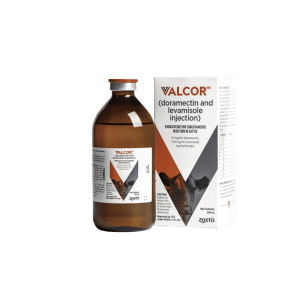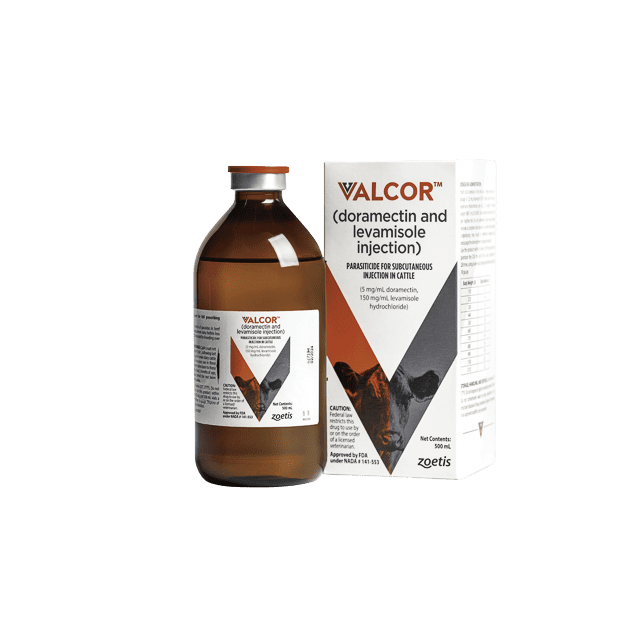By Burt Rutherford Contributing Editor
Bottom line, parasites cause problems. Even when you don’t see clinical signs of internal or external parasites, they still cause problems.
“Some of the clinical signs that we typically associate with parasitism, probably the most common one would be diarrhea, but they do have the ability to cause a rough hair code as well,” according to Dr. Mark Alley, managing veterinarian with Zoetis. “And with their unique ability to damage some of the glands in the abomasum or even in the intestine, some calves will actually lose appetite and have a resulting weight loss and poor productivity.”
What’s more, some internal parasites such as Haemonchus are blood suckers and they will actually remove enough blood from those animals that they will get some pretty severe anemia and maybe even a bottle jaw, which is indication of loss of protein in the diet, he adds.
“If we look at the cow side, we may have seen some issues with poor fertility, and we cannot forget that immunosuppression or suppression of the ability to respond either to a virus or vaccines may occur. We do have in some extreme situations with heavy parasitism where cattle actually will die,” Alley says. “The impact that we often see from a weight loss and maybe potentially changing of our immune response, that’s that subclinical effect and that occurs much earlier in the process.”
Products to control internal and external parasites have been around for a long time, and there are a lot of different factors that impact parasite management. “So taking all those into account when we start looking at parasiticides, the selection of the right product and making sure we maximize efficacy of it is very important,” he says.
Enter Valcor, a combination of doramectin and levamisole, which is the first combination endectocide for use against both internal and external parasites. Valcor is a prescription injectable product with the strength of two active ingredients to treat and control adult stage and L4 stage of Haemonchus placei, Cooperia and Ostertagia ostertagi (including inhibited L4), as well as the adult stage of Nematodirus helvetianus. It is also indicated for the treatment and control of lungworms, eyeworms, grubs, mange mites and sucking lice.
Valcor combines doramectin from the macrocyclic lactone class of dewormers with levamisole from the imidazothiazole class. “The two active ingredients in one product offers convenience to veterinarians and producers who may have had the need to use two products concurrently in the past,” Alley says. “Valcor provides two active ingredients in a single product and can help save labor and improve efficiency at the chute.”
According to Dr. Alley, research with more than 1,500 heifers showed Valcor reduced fecal egg count numbers by 99.9 percent, and heifers treated with Valcor gained 9.3 pounds more than heifers treated with another parasiticide over 56 days.
Parasite resistance to wormers is a growing concern, he says. According to the Food and Drug Administration (FDA), some of the factors leading to parasite resistance are treating too often, treating the entire herd and inadequate quarantine procedures, especially for newly-arrived animals. “And probably the largest one is underdosing,” Alley says. “Things that are becoming very important for decreasing the chance of dewormer resistance is making sure we select the right dewormer and making sure that there are some susceptible worms on the pasture.”
That’s where the combination of a macrocyclic lactone like doramectin and an imidazothiazole like levamisole comes into play. Macrocyclic lactones provide good efficacy against both internal and external parasites and are popular products. However, when looking at the number of injectable imidazothiazoles that potentially were used in the U.S. in 2022, there were none, he says.
“That gives us greater opportunity to incorporate this particular class of dewormer into our program and hopefully get much better control than we historically have gotten,” he adds. “This product is going to be the broadest spectrum of injectable parasiticides on the market, including control and treatment of up to 35 different parasites and their various stages.”
Dr. Alley says Valcor is different than other injectable macrocyclic lactones when it comes to dosing. “The dose is 1 ml per 55 pounds of body weight, and it is to be administered as a subcutaneous injection in the neck.”
Due to that difference, Zoetis offers a dial-a-dose injector that ensures 2 ml (or cc) of product per 110 pounds, he says.
Valcor can be used in cattle two months of age and older and in replacement dairy heifers younger than 20 months of age. It’s not intended for use in beef bulls for breeding or intended for breeding dairy calves or milk calves. Do not treat cattle with Valcor within 15 days of slaughter. Use with caution in cattle treated with cholinesterase inhibitors. This product is likely to cause injection site swelling; tissue damage (including granulomas and necrosis) may occur. These reactions have resolved without treatment. See full prescribing information at ValcorTough.com/pi.







